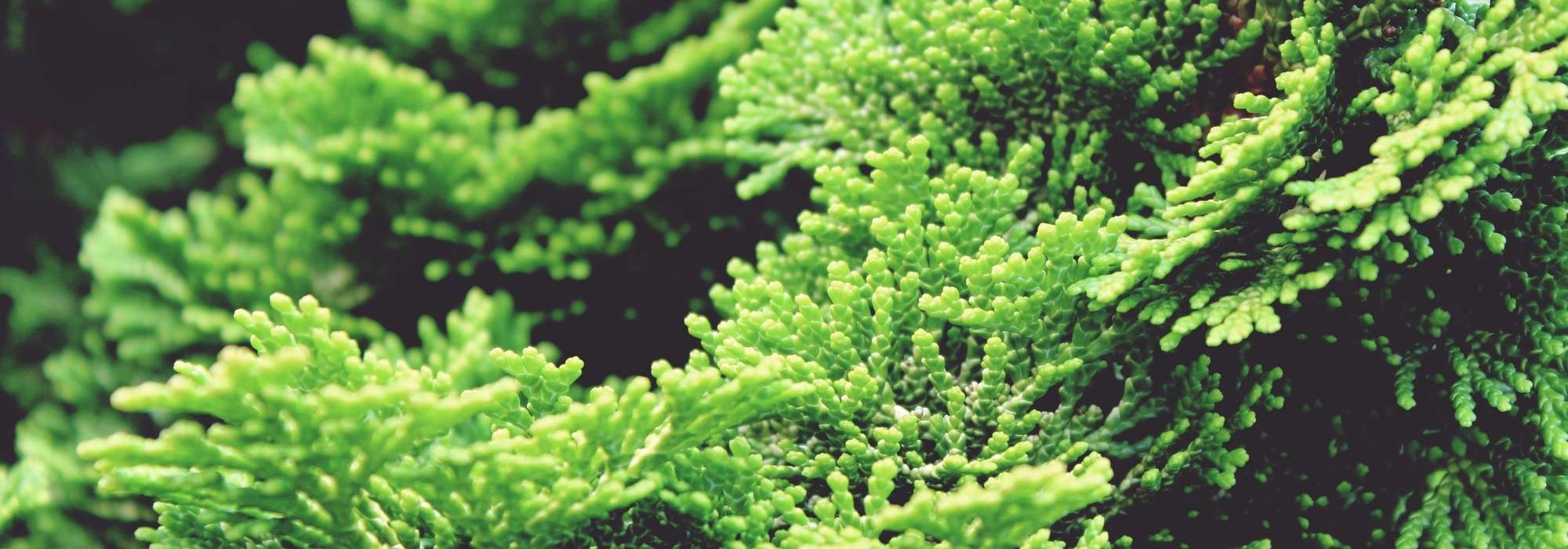
Chamaecyparis, False cypress: planting, pruning and caring for
Contents
Chamaecyparis, in a nutshell
- False cypresses are hardy evergreen conifers that thrive in humid, cool climates.
- A few North American or East Asian species have produced numerous cultivars much prized in ornamental gardens, with varied habit, fastigiate, spreading or dwarf, in a wide range of colours and textures, but which do not tolerate pruning well.
- Their growth is rapid in sheltered situations, in fertile, well-drained, deep soil, except in dwarf forms, which have slow growth.
A word from our expert
Chamaecyparis are among those conifers with dense, scaly foliage appreciated for the making of hedges, notably the Chamaecyparis lawsoniana species, surprisingly used in its typical form. It is nevertheless one of the conifers that has produced the greatest number of cultivars (over 200!) such as Alumii with very compact, bluish foliage and a conical form of 3 to 4.50 m or Ellwoodii, much used in hedges. The wild form, capable in cultivation of reaching 36 m in height with a trunk of 1.20 m diameter, comes from the north‑west United States, like the giant Thuja. Its branchlets, tinged dark green or bluish green, with slightly trailing tips, give it a remarkable, somewhat phantasmagorical undulating appearance while its variety Aurea Densa forms a spectacularly compact golden column. Sawara cypress (Chamaecyparis pisifera) and Japanese Hinoki cypress (Chamaecyparis obtusa) also offer a range of dwarf or moderately vigorous cultivars, with filamentous or, conversely, blunt branchlets, with a fern‑like habit (C. obtusa Teddy Bear), acidular in obtusa Wissel in very attractive golden, bluish or intense green colours.
The word ‘Chamaecyparis’ is derived from Greek and means ‘cypress‑shaped’, given the strong resemblance of its conical habit and its aromatic foliage made of small imbricate scales. However, Cupressus occupy dry, sunny southern areas while Chamaecyparis grow in sheltered, moist, often coastal areas.
Chamaecyparis are not demanding about the nature of the soil, provided it is fresh, well‑drained and not excessively calcareous. The species lawsoniana shows a strong susceptibility to the Phytophthora fungus that decimates its wild population in the United States as well as in gardens where the disease is often spread by nurseries. And although they prefer fertile, deep humus, they adapt to less favoured ground, with moderate growth and reduced luxuriance. Avoid pruning them as much as possible.
Description and botany
Botanical data
- Latin name Chamaecyparis
- Family Cupressaceae
- Common name False cypress, Leyland cypress, Lawson cypress
- Flowering from July to October
- Height between 0.50 and 40 m
- Sun exposure sun or partial shade, sometimes shade
- Soil type any loose soil and well-drained, not too calcareous
- Hardiness Moderate to excellent (-15 °C to -34 °C)
Genus Chamaecyparis comprises around six species, the boundary with Cupressus not always clear. For example, transfer of Chamaecyparis nootkatensis to Cupressus has been discussed. Both genera were even conflated in 19th century. They are often very large trees with highly scented wood and foliage. European settlers who first encountered these conifers called them ‘cedar’ because of wood scent. Several morphological criteria nevertheless allow differentiation. Persistent shoots of Chamaecyparis are flattened as in Thuja, whereas those of Cupressus are cylindrical. The latter have a straight leading shoot while Chamaecyparis have a flexible, curved leading shoot. Globose cones are smaller than in Cupressus.
Chamaecyparis occupy cool, humid northern regions of North America and East Asia (Japan, Taiwan) where they typically mix with other conifers in shaded, moist forests. Chen-mu or Sacred Tree (Chamaecyparis formosensis), longevity over 2,000 years, ranks among tallest trees in Taiwan with heights of 55–60 m and trunks up to 7 m wide, though it rarely exceeds 15 m in cultivation. Chamaecyparis lawsoniana from North America can also reach 60 m alongside Douglas fir and live to 600 years. Chamaecyparis nootkatensis, Nootka cypress, also called “yellow cedar” for wood colour, found along Pacific coast to Canada, reaches 36 m like its Japanese cousin Hinoki (C. obtusa), a slow-growing species with some specimens reaching 50 m. Sawara (C. pisifera) attains 45 m in Japan.
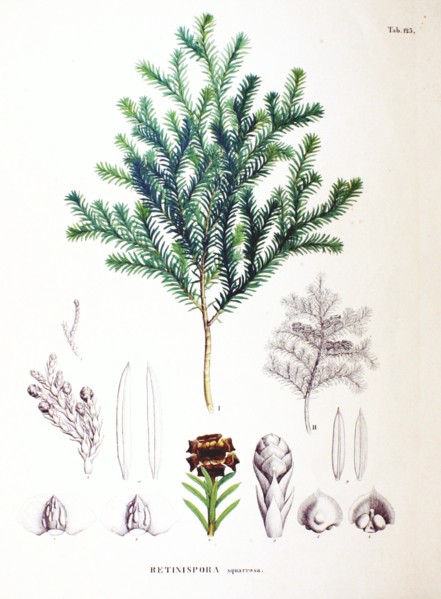
Chamaecyparis obtusa – botanical illustration by P.F. von Siebold and J.G. Zuccarini
Foliage made of scales in four ranks, more or less applied against the twig, is aromatic, with parsley scent in lawsoniana, cedar in obtusa, resinous in pisifera, resin described as unpleasant in nootkatensis… There are cultivars that retain juvenile foliage in form of short needles such as Japanese Hinoki ‘Wissel’ or Chamaecyparis thyoides Blue Rock. While C. lawsoniana shows bluish-green or dark matt green colouring, paler beneath, C. obtusa displays a very bright intense green on rounded twigs of beautiful texture and C. pisifera ‘Boulevard’ has feathery, silvery-green foliage. Numerous cultivars of genus offer very wide range of colours, textures and habits.
Bark often reddish, fibrous, forming long vertical strips.
Male and female flowering occur on same plant. Tiny male cones, greenish to yellowish, appear at twig tips and release pollen in March or April when female flowers develop at ends of other twigs.
Globose cones are strobili, sometimes fleshy, less hard and smaller (about 1 cm) than in Cupressus. Scales, 4 to 10 depending on species, bear small point on top, a fold in lawsoniana. They ripen in autumn when scales open to release winged seeds but often persist long on tree. Seeds are released earlier than in Cupressus.
Wood of false cypresses is fine-grained and durable, much prized by Japanese for coffins, temples, lacquered furniture and prestigious houses. After heavy exploitation of Hinoki (C. obtusa), they imported Lawson cypress wood from United States, contributing to decline of populations already badly affected by Phytophthora. Strict regulations now require cleaning tyres and boots when entering those native forests.
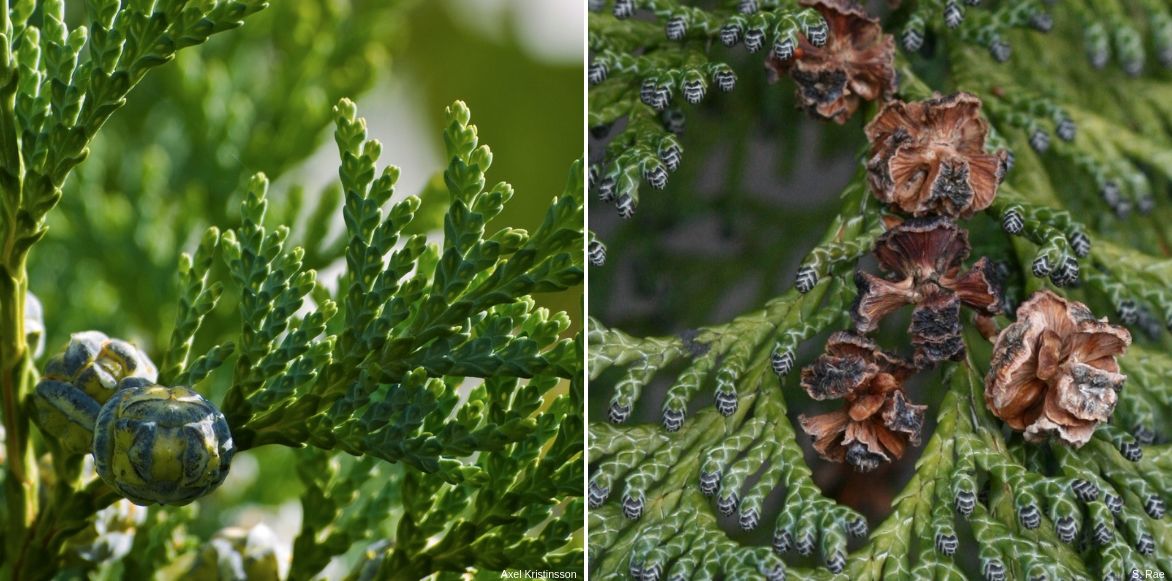
Chamaecyparis lawsoniana: scale foliage and globose cones
Read also
Thuja: planting, pruning and careMain varieties of Chamaecyparis
Warning: many varieties of Chamaecyparis sold as “rockery conifers” because of their slow growth of about 1 m in 10 years sometimes reach 4–5 m after 20–25 years! Do not be swayed by miniature form of young plants, check dimensions at ripeness of your specimen.
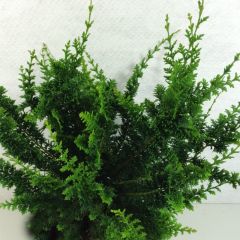
Chamaecyparis obtusa Teddy Bear - Hinoki Cypress
- Height at maturity 1 m
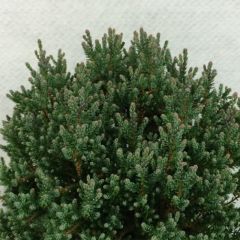
Chamaecyparis thyoides Blue Rock
- Height at maturity 1,50 m
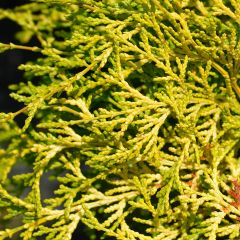
Chamaecyparis obtusa Kamarachiba - Hinoki Cypress
- Height at maturity 1,25 m
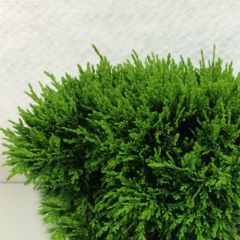
Chamaecyparis lawsoniana Green Globe - Lawson Cypress
- Height at maturity 50 cm

Chamaecyparis pisifera Boulevard - Sawara Cypress
- Height at maturity 2,50 m
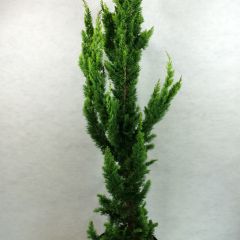
Chamaecyparis lawsoniana Yellow Spire - Lawson Cypress
- Height at maturity 2,75 m
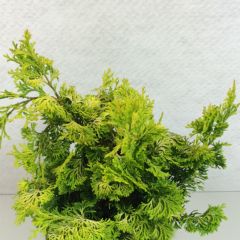
Chamaecyparis obtusa Aurea - Hinoki Cypress
- Height at maturity 9 m
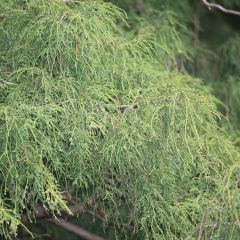
Chamaecyparis pisifera Filifera - Sawara Cypress
- Height at maturity 5,50 m
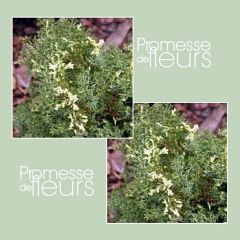
Chamaecyparis obtusa Snowflake - Hinoki Cypress
- Height at maturity 1,80 m
Discover other Chamaecyparis
View all →Available in 2 sizes
Available in 1 sizes
Available in 1 sizes
Available in 1 sizes
Available in 1 sizes
Available in 1 sizes
Available in 2 sizes
Available in 1 sizes
Available in 1 sizes
Available in 2 sizes
Planting
Where to plant Chamaecyparis?
Chamaecyparis are not demanding about soil type, provided it is deep, cool and well-drained. They prefer cool conditions, not too sunny, in partial shade. In general, avoid climates that are too dry and soils that are poorly drained.
These conifers will also tolerate poor soil with moderate growth and reduced vigour, which is not necessarily a bad thing if wishing to keep specimens small. Some cultivars are more sensitive than others such as C. pisifera Boulevard or C. thyoides Blue Rock which both dislike calcareous soils, as well as excessive sun for the former and wind for the latter; C. lawsoniana Pottenii browns under drying winds or harsh winters… Chamaecyparis lawsoniana Ellwoodii with its grey-blue foliage, darker in winter, tolerates shade well.
Beware of waterlogged soils in winter which may promote development of Phytophthora cinnamomi if the fungus is present in the soil, because the species lawsoniana is very sensitive to it.
When to plant?
Prefer planting in autumn (October–November) to establish Chamaecyparis, or in February–March.
How to plant?
This plant is generally very easy to grow.
To create a clipped Chamaecyparis hedge, space young plants 80 to 100 cm apart and up to 2 m apart if used as a windbreak left in natural habit.
- Dip the pot in a bucket of water to soak it well.
- Dig a wide hole at least three times wider than the rootball because roots remain fairly superficial and spread widely.
- Add a few handfuls of sand and gravel to ensure good drainage around the roots. In heavy soil, opt for planting on a mound or within a rockery.
- Apply a dose of horn meal if soil is sandy.
- Place the plant in the planting hole.
- Replace the soil and firm lightly.
- Water and mulch.
In a pot, use a light humus-bearing soil or mix ¾ garden soil with ¼ pumice and ¼ compost. Choose specimens with slow growth such as Chamaecyparis obtusa Pygmaea or pisifera Boulevard.
Care and pruning
Potted young plants require regular watering, especially in hot sun. Water young plants correctly during first 2-3 years.
Main pests and diseases of Chamaecyparis
Chamaecyparis is generally a bush that causes no maintenance problems when soil is healthy and it does not undergo long periods of drought. However use in single-species hedging sometimes leads to rapid contagion such as more or less severe twig dieback, which can be caused by:
- fungal browning which appears during wet springs on lower branches. Apply a fungicidal treatment every 15 days, using a copper-based product or horsetail decoction, or cut and burn affected twigs.
- Phytophtora to which Chamaecyparis is very susceptible, causing progressive desiccation of whole plant due to necrosis of collar tissues and roots under bark. Uproot and burn affected specimens and plant non-susceptible species.
- cortical canker which particularly affects Leyland cypress (x Cupressocyparis leylandii), a hybrid between Cupressus and Chamaecyparis. It causes bark cracking and resin exudations accompanied by black pustules. Cut and burn affected branches, dress wounds with mastic. Uproot if trunk is affected.
- root rot (Armillaria), favoured by heavy, wet soils, which causes sudden desiccation of plant accompanied by strong fungal odour. Uproot and leave planting hole open to air for one season. Replace soil.
- colonies of aphids (apply an insecticidal treatment quickly such as soap or fern manure),
- juniper buprestid which bores galleries in wood and causes browning in summer. Only solution is to cut and burn swollen twigs.
Pruning Chamaecyparis
These bushes or trees do not respond well to pruning, so prefer to use them in free habit when forming hedges. Always make very light pruning cuts, carried out in August if necessary, always retaining foliage.
Multiplication
Simplest way to multiply plants is to propagate a large number of semi-woody twigs in August–September because success is not guaranteed.
Propagation by cuttings
Prepare a box by filling it with a mix of half turf and half sand or work nursery soil.
- Take 10 cm-long shoots by pulling on them to retain a flap of bark.
- Remove branching near base of shoot.
- Insert these to one-third of their length, taking care that they do not touch.
- Firm down gently all around to remove air pockets and ensure good contact between growing medium and cutting.
- Place a cold frame over them and a shade cloth until spring.
- Separate the cuttings, pot up or plant out in nursery ground for 1–2 years, or plant directly in final position if soil is favourable
→ Discover our tutorial : How to take cuttings from conifers?
Uses and companion plants
Use Chamaecyparis for their singularity as isolated specimens in middle of a short grass meadow or as background for a flowering border such as Chamaecyparis obtusa ‘Nana Gracilis’ with an erect, mounding habit reaching 2 m at maturity, which unfolds clouds of shell-shaped dark green foliage. Some form a perfect cone such as lawsoniana Columnaris while others form a curtain 6 to 8 m in diameter and 10–15 m high such as C. nootkatensis Glauca.
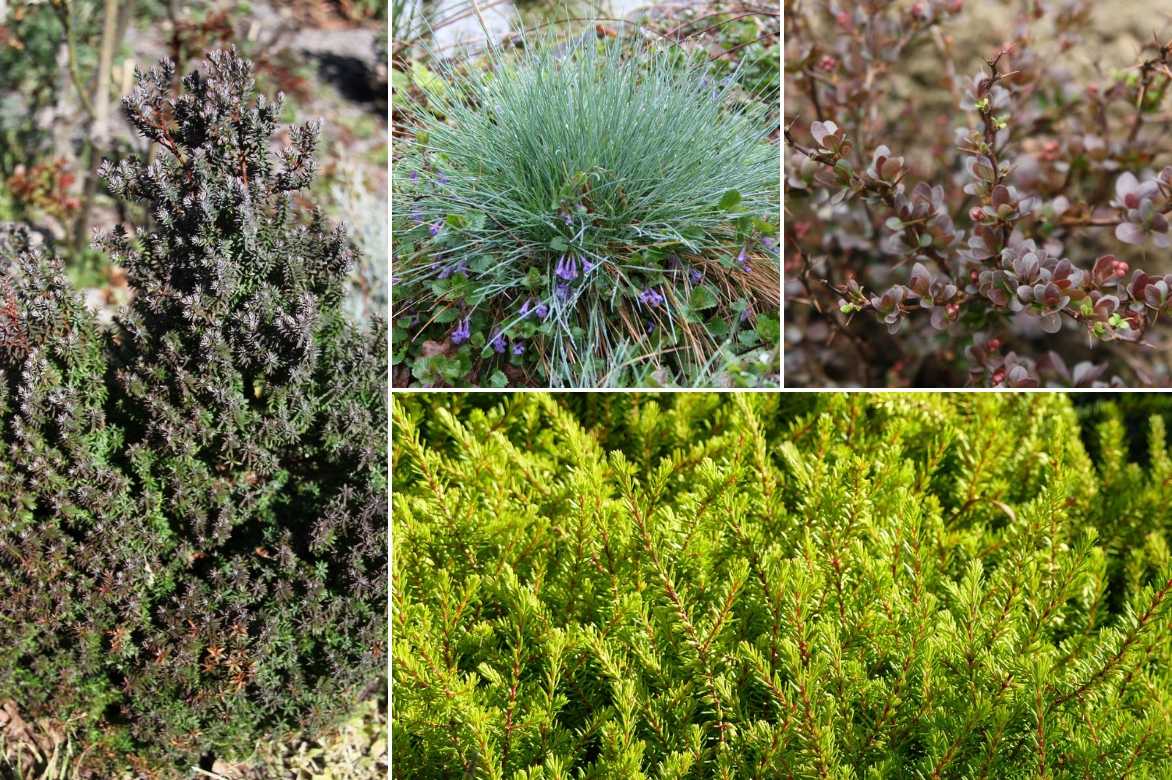
An idea for a combination: Chamaecyparis thyoïdes ‘Rubicon’ (or ‘Blue Rock’ or other) on a luminous tapetum of heather Erica darleyensis ‘Eva Gold’, a few clumps of Festuca glauca and a few mounds of Berberis thunbergii ‘Atropurpurea Nana’
Smaller Chamaecyparis, thanks to slow growth, make perfect candidates to ornament a rockery, a small garden or a terrace in pots. With naturally sculptural silhouettes that do not require pruning, they offer striking graphic qualities suited to contemporary gardens as well as naturalistic gardens. They combine well with other dwarf conifers such as thujas, junipers, cryptomerias or with bushes with flowers for acid soils and cool areas such as azaleas, andromedas, heathers or camellias. They can also be trained into cloud forms or grown as bonsai such as the obtusa ‘Aurea’ whose masses of golden foliage contrast nicely with dark colour of trunk.
Learn more
Discover our range of Chamaecyparis.
Watch our video on Chamaecyparis obtusa
Discover our tutorial: How to propagate conifers?
- Subscribe!
- Contents
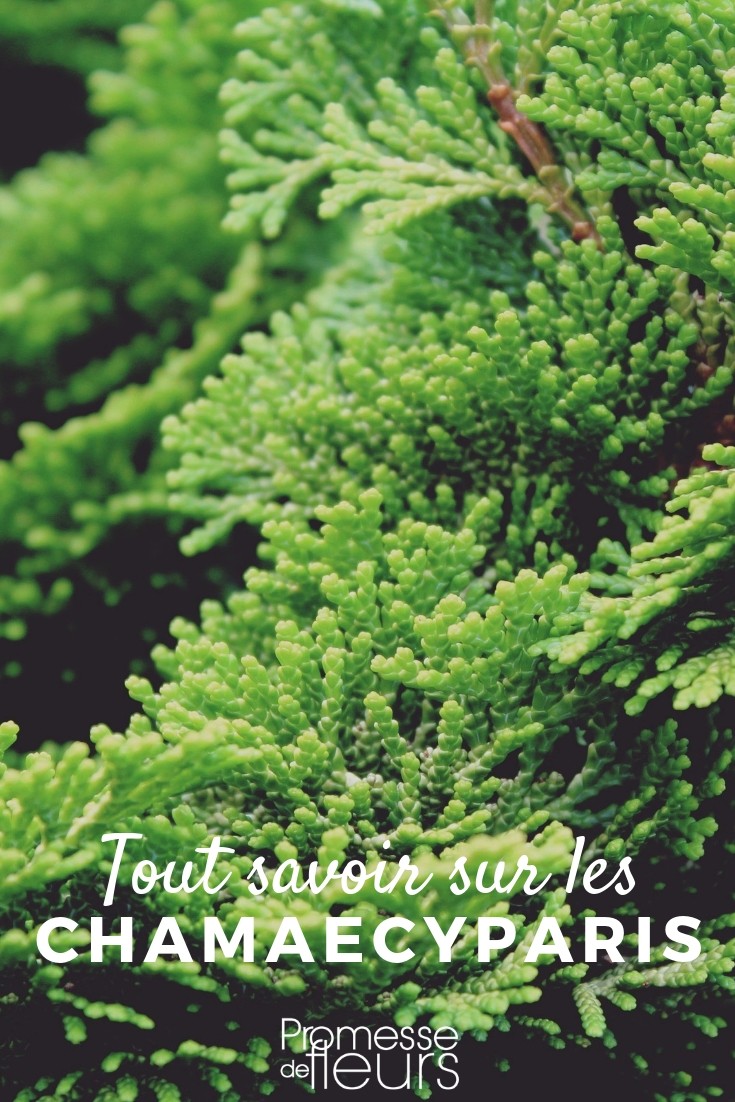































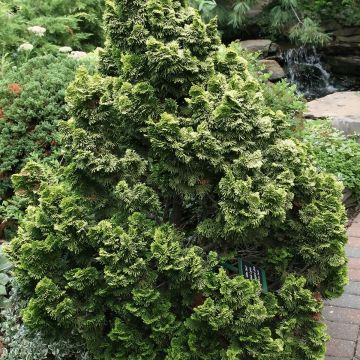
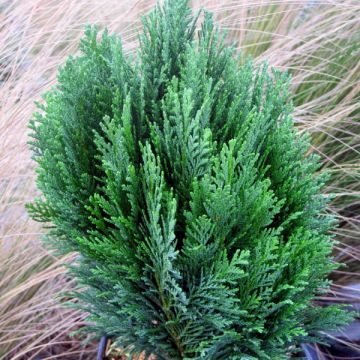


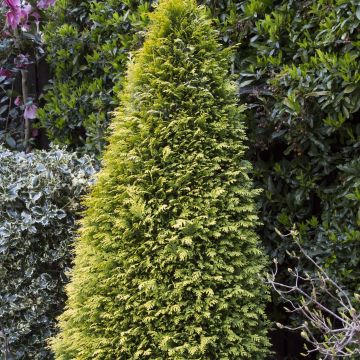

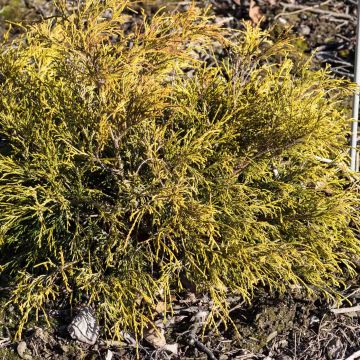


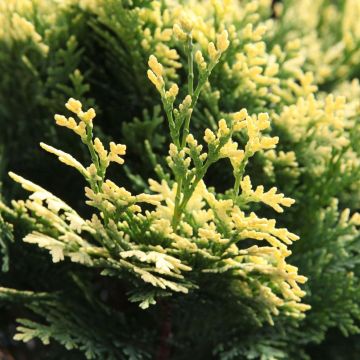
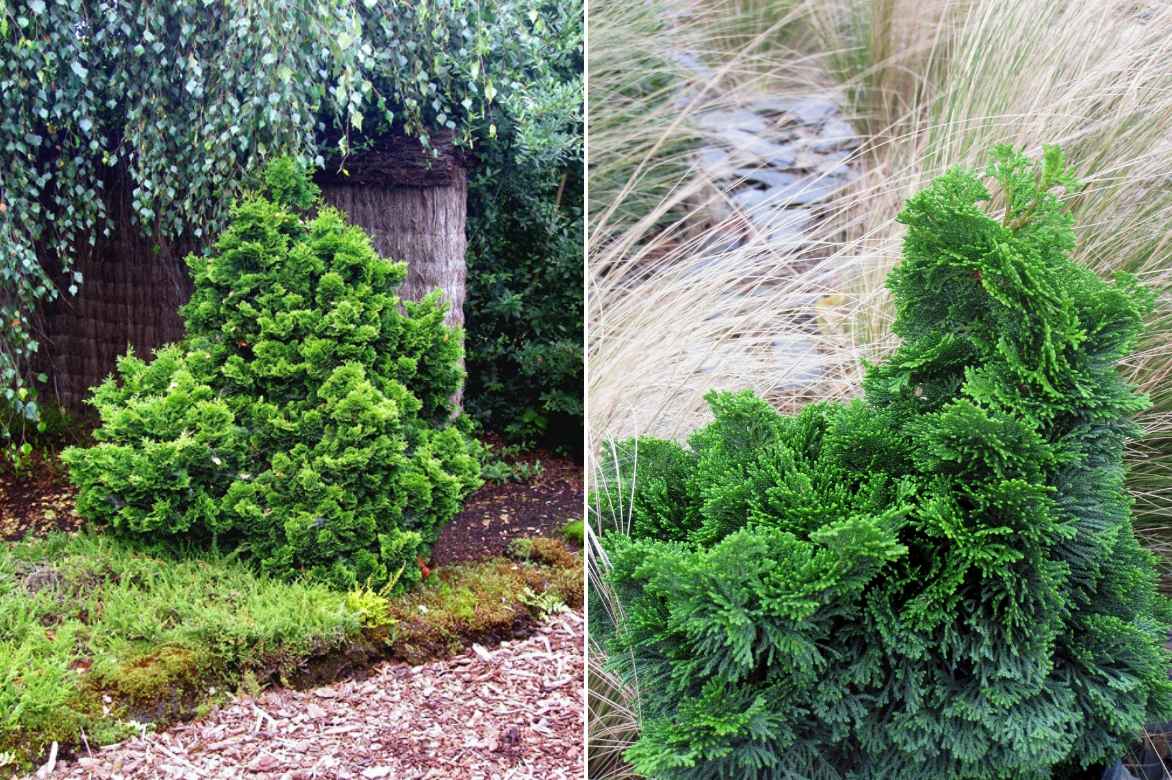
Comments